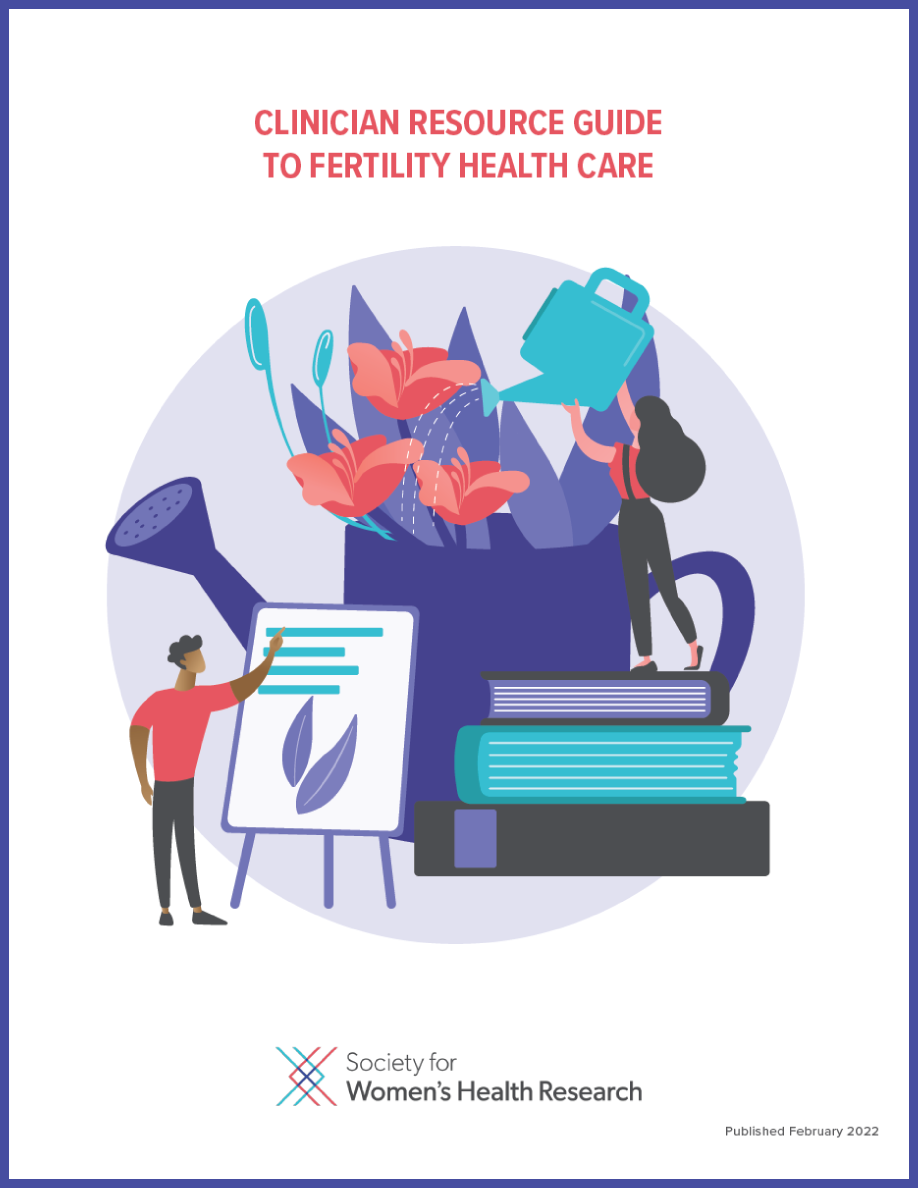Infertility is increasingly common in the United States, with nearly 1 in 8 couples having trouble getting pregnant or sustaining their pregnancy. While infertility is found to be due to male factors as often as female factors, women tend to bear a greater burden in infertility treatment and care management. Navigating fertility treatment can be complex, with significant emotional, physical, and financial stressors.
The Society for Women’s Health Research (SWHR) has created resources guides for patients and providers to increase awareness and quality of fertility health care.
The Clinician Resource Guide to Fertility Health Care was created to assist health care providers as they work with patients, women, and families to navigate their fertility options, from family planning to evaluating and treating infertility using a shared decision-making approach.
As part of SWHR’s Fertility Program, this guide was co-released with the Women’s Resource Guide to Fertility Health Care.
Both guides build on SWHR’s Fertility Roundtable held in September 2021 and will be discussed during SWHR’s upcoming event: The Fertility Journey: Understanding Options and Navigating Care on March 18, 2022.
Download Resource Guide








